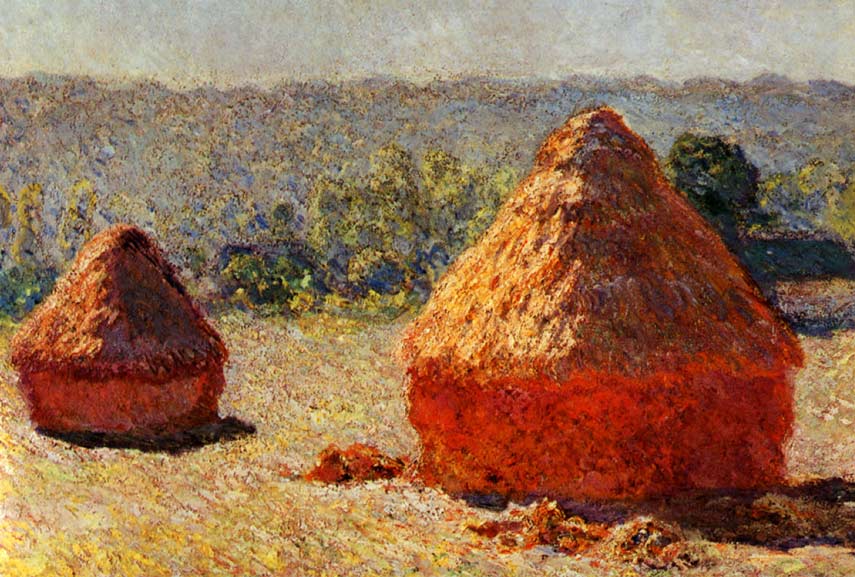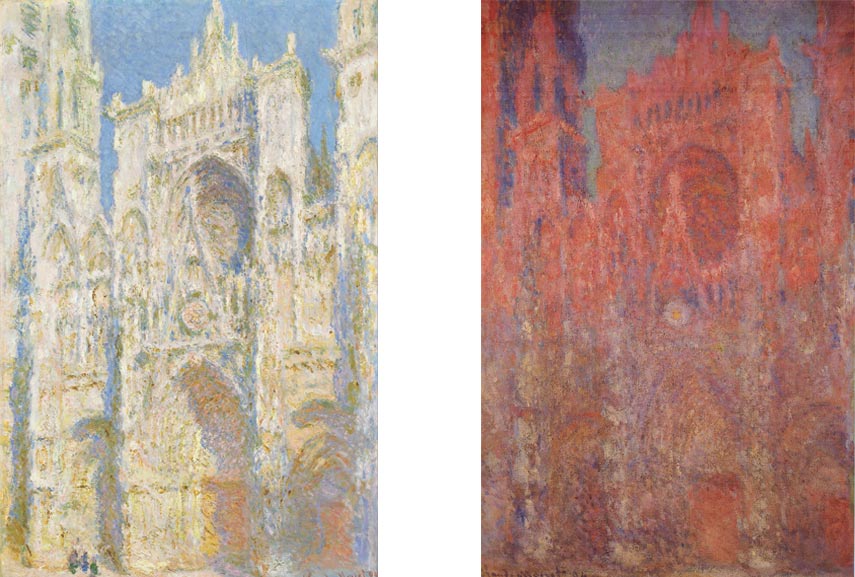How Monet's Paintings of Rouen Cathedral Announced Abstraction in Art
What is the first thing you think about if I write and you now read the two words - Rouen Cathedral? For many of us, the first thing that would come to mind would be Claude Monet, one of the most influential and most important artists of the much-celebrated Impressionism art movement. His famous painting series of Rouen Cathedral, painted over a period of two years, troubled and challenged Monet and brought the artist to his limits. Known for other painting series, such as the Haystacks, Water lilies and the Weeping Willow, this manner of work demonstrates the artist’s concerns about time. Not surprising, since in the period of the birth of Monet’s early works, the arrival of the machine, with its fixed temporal rhythms had encouraged this concern to the limits of obsession shared by society at large. But, it is not the issue of time that celebrated the painting series of Rouen Cathedral but light. It is this and also other elements, which I will discuss in this article, that influenced many to link the work of Claude Monet to the Abstract Art movement that followed.

The Importance of the Painted Surface
The representation of the same pictorial object at a different time, with the aim of observing the shift and the changes in the natural light, was not new to Monet, who between 1890 and 1891 had already created a series of 15 canvases representing a group of haystacks in the outskirts of Giverny. Painting them at different times of the day, and also in different season, this series of paintings, showcased Monet’s interest for the dynamic and changeable nature. The paintings were well received by the public at large, and it was the artist Wassily Kandinsky, after seeing the paintings in an exhibition in Moscow in 1895, that suggested this series as the first abstract painting in history.
"And suddenly, for the first time, I saw a picture. I read in the catalog that it was a haystack, but I could not recognize it (…) I realized that there the object of the picture was missed (…) What I had perfectly present was the unsuspected -and until then hidden- the power of the palette…"
With this statement, Kandinsky shows us the interest that was shared by many of the early Abstract artists, and that is, of course, the removal of the realistic subject matter, but also, and possibly more important here, is the application and the dominance of color. By the late 1860’s, Monet started to develop his own and distinctive style of painting. Departing from the clear depiction of forms and linear perspective, Monet started to experiment with the loose handling of the paint, bold colors, and unconventional compositions. The concern with color, more importantly the perception of color, influenced the artist to think about the painted surface of his canvases. In his later years, this interest was more important for the artist, who began to paint in smaller strokes, building the decorative surface of the canvas with broad fields of color. The effects that the artists achieved, in the series of paintings of the 1890’s, represent a remarkable advance towards abstraction and towards a modern painting focused purely on surface effect.

A Step Beyond – Rouen Cathedral by Monet
With the painting series of the Rouen Cathedral, Monet went further into the investigation of time and entered the arena that measures time, and that is light. This concern towards the light more importantly, the effect of change and alteration of the subject by the shift in light, and the need to capture the fleeting effect of what he saw followed Monet throughout his career.
"Once more I have undertaken things which are impossible to do; water with grasses waving in depths...It's wonderful to see but it drives you mad to want to do it. But I am always trying things like that."
Claude Monet
This series pushed the subject matter of Monet closer to abstraction. You may wonder how, when in over thirty paintings that the artist produced, we are able to distinguish the cathedral and its facade. The impressive, Gothic style architecture, painted in the period between 1892-1893, is not the central subject matter but only the backdrop to the exploration of light. The removal of the importance of the cathedral, Monet achieved by the extreme nearby point of view and the complete absence of perspective. This close-up erased the grandeur and shifted the focus on a more abstract thought that in return transformed the many canvases into color celebrations.
We must acknowledge the challenge that Monet presented to himself and focus briefly on the manner of painting. This series was done, with Monet’s pure surrender to the elements of nature, that he tried to control, to an extent of course, by preparing ten canvases that he had in front of him every time he looked at the Rouen cathedral, from the apartment he rented opposite the site. The natural forces at play in the creation of atmosphere ruled over the choice of the canvas, the artist would paint. For each time of the day, or for a different weather, Monet would concentrate working on the canvas that is the most similar to the light outside. As the Sun moved, so did Monet.

Monet’s Abstraction
Unable to finish some of his paintings on site, Monet returned back to his studio and continued working from memory, trying to present his impressions of light that hit the stonewall façade. Here, we are confronted with yet another element of abstraction and that is the subjective nature of the artist or the importance of the individual perception. Monet breaks away from the traditional rules of the established school of thought and explores further the one important element for building the surface of his painting, and that is color. This only emphasizes the idea, that this series of painting is a proto-abstract work of art.
The Abstract art that followed, and many of the ideas that were developed further during this movement and many that subsequently followed, have countless of the main principles rooted in the rebellious and experimental nature of Impressionism art. As one of its leading figures, Claude Monet, unlike most of his colleagues and artist friends, focused on the exploration of time and light. This concern suggests a scientific and abstract way of thinking were the reality is never taken as it is but it is looked at with an investigational eye. The painting series of his later period, that focused on the investigation of light, transformed the canvas into a surface that demonstrates the artist’s hand and the artist’s time. This focus on the existential is developed further in the most celebrated abstract art movement, Abstract Expressionism and its dominating figure, Jackson Pollock. What he and Monet share, that followed from his Rouen cathedral series and the exploration of light, is the gestural application of color and the performative element applied to the act of painting.
Editors’ Tip: Claude Monet: Life and Art
This book is a comprehensive exploration of the Claude Monet’s rich and important artistic career. Exploring the artist’s aesthetic concerns, the book relies on the gathered biographical information, as well as on the exploration of the individual paintings. Showcasing the points of view of this celebrated artist, the book covers the range of works from his rich legacy and aims to bring forward the mind and the personality of this highly talented artist. Combining documentary material as well as the analysis of the public’s response to his work, this book demonstrates how Monet was able to achieve enormous success throughout his career.
Featured image: Claude Monet – Rouen Cathedral, Façade and Tour d’Albanel, detail. Image via Wikipedia.com
Can We Help?
Have a question or a technical issue? Want to learn more about our services to art dealers? Let us know and you'll hear from us within the next 24 hours.

